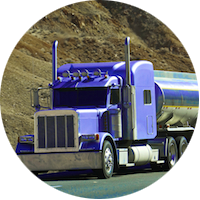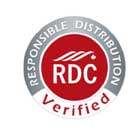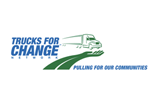Best Practices, Chemical Transportation, Hazmat Transportation
All about Tranportation Claims
Many companies make costly mistakes when handling transportation claims that result in claims not getting paid. There is a specific process that must be followed to ensure that the carrier involved pays the claim. If the shipper or consignee, do not follow this process, the carrier will have an “out” and not pay the claim. Then you’ll end up in court and give yourself a lot of headaches you don’t need. At Direct Service Network, we coach our clients through this process to ensure their claims are paid by the carrier involved.
1. Communicate & Digitize
When product is lost or damaged upon arrival, prompt attention is critical. Noting the problem on the Bill of Lading is very important. Don’t under estimate the need to be detailed at the onset of a potential claim. Digital pictures and a quick phone call to the broker/carrier can save many headaches down the road. The carrier has a legal right to have the value of the claim mitigated where possible. If you don’t give the carrier the opportunity up front to salvage, re-deliver, return the goods, etc. Then some or all of your claim may be denied on the basis that you did not mitigate the value of the claim.
Quicktips:
- Note all damage on the Bill of Lading
- Take pictures
- Notify carrier IMMEDIATELY
2. Keep the Goods!
Never discard the goods that have been damaged until the claim has been resolved. The carrier has the right to inspect the goods that have been damaged. Further, the carrier may want to take ownership and salvage the goods if full claim value is awarded. Discarding the goods can result in the claim being denied.
3. Make Every Effort to Mitigate Damages
There is an onus on all parties do what is reasonably necessary to mitigate the amount of potential damages. Simply discarding materials that may have a secondary resale market or that may be consumable again in the manufacturing process is not taking the proper steps to reduce the extent of the loss in relation to the claim. Not working together with the carrier to mitigate the cost of the claim, will work against the claiming party in the eyes of a court when determining the valuation of damages. Ideally, you want to be reasonable with the carrier to work out a claim value that you both can agree on. No one wants to end up having to go to court to recover the cost of a claim.
4. Pay the Freight Charges
The same provision which outlines the time-line for quantifying a claim, also states that this filing must be accompanied by a copy of the paid freight bill. Not paying the freight bill (no matter how just this may seem under the circumstances) can work against you when attempting to resolve the claim expeditiously. In Canada, you’re claim will be outright denied by a court if you haven’t included a copy of the paid freight bill with your intent to claim against the carrier. In the US, holding back the freight charges to “offset” the amount of the claim is more common and courts have upheld that this practice is acceptable.
5. Know the Governing Bill of Lading
Claim law differs from Province to Province and State to State. Further, claim law differs dramatically on transborder shipments. Both from a liability amount and a notice period, Canada and United States rules differ considerably. It is critical to remember the point of origin dictates the jurisdiction from which the claim will be settled.
This is also applicable for shipments moving to or from Mexico. As an example, for a shipment being picked up in Canada to be delivered to a consignee in Mexico, if there is damage or product missing, Canadian claim law will apply in the resolution process.
6. File the Claim Promptly & Properly
The differences are significant in the amount of time you are allowed to submit a written intent to claim to a carrier. Be careful, filing a claim after this period will automatically void the claim.
Canadian BOL’s – 60 days from delivery or within 9 months in the case of failure to make delivery
U.S BOL’s – 9 months from date of delivery
Things to include in your claims submission:
- Pictures of the damaged product
- Copy of the shipper’s invoice for the entire load
- Copy of the bill of lading
- Copy of signed Proof of Delivery (POD) showing consignee’s acknowledgment of damage or loss
- Claim form, Letter, etc. filled out by the customer showing amount and value of product being claimed
- If the product is being salvaged, a receipt with the product and price is required.
7. Understand the liability of the carrier
The carrier has what’s called “Strict Liability” while in care and control of your shipments. This means that carrier is liable just because of the fact that damage occurred. As a claimant you do not have to prove intent or negligence. Sounds great, right! Not really. Because the carriers liability is so strict, there are sets of circumstances in which they can be excused from liability and if they can be shown, the courts normally favor the carrier. Here are a summary of the carrier’s excuses from liability:
- An Act of God
Okay, let’s say a tornado swept down and picked up the truck and destroyed your cargo. The carrier is exempt from liability in this case. You can probably guess that this is a rare set of circumstances in which this would apply. However, if the carrier can show an act of God caused the damage. They are excused.
- Riot, Strike, and Act of the Queen’s Enemies, Terrorism
Crossing a violent picket line in a strike situation to deliver product may put your cargo at risk. The carrier would be excused from liability in this case.
- An Act of Public Authority
Let’s say a customs officer instructs the carrier to open every box on the trailer to inspect for contraband. The carrier must follow the directions of the Public Authority. In this case the carrier would be excused from liability for any damaged caused.
- Inherent Defect or Vice in the Goods
This is where things get complicated. Pretty much any situation can blamed on an inherent vice of the goods. An example would be steel. Let’s say upon delivery it was rusted. Steel rusts when exposed to air. The rusting of steel is an inherent vice.
Falling in this category is also a duty to load, secure and package a shipment “to withstand the normal rigors of transport”. So if goods are damaged because a truck has to stop short to avoid being cut off on the highway and your skid falls over, the carrier would argue that it wasn’t packaged properly to withstand the normal rigors of transport. Any reasonable person should expect that the carrier may have to slam on his brakes from time to time.
Some other examples of where I’ve seen this defense used:
- crushed boxes (not packaged to withstand…)
- Toppled skids (not secured to withstand….)
- Evaporation, rusting, spoilage (vice)
- Insect infestation
- Absorption of odors
8. Be able to prove where the damage occurred
Really, the only 3 things that the shipper has to prove is 1) that there was damage, 2) proof of loss (amount) and finally, 3) that the damaged occurred while it was in the care and control of the carrier.
The fact that the carrier signed the bill of lading clean on pick up and then the consignee signed it damaged upon arrival, is pretty good evidence that the damage occurred while the goods were in the care and control of the carrier. However, it is not irrefutable. The carrier may refute this by asserting one of the following:
- The driver was not given (or not permitted) ample opportunity to inspect the goods.
- The truck was loaded “shippers load and count” and then the trailer was sealed as a full load.
- The driver could not have possibly counted every box on the skid, other than the skid appeared to be full and wrapped and there was evidence of tampering.
Transportation claims can be a very complicated and frustrating. Knowing claims law as well as common practice can really help you out.
At Direct Service Network Ltd., we help our clients negotiate with carriers as well as implement proven strategies to counter a carrier’s excuses from liability. If you’re having frequent claims issues or trouble dealing with the claims you already have. Give us a call. We’d be glad to help.
About Author
Comments are closed











